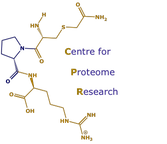Detailed protein analysis of the rat MUP complex
Major urinary proteins (MUP) are the major component of the urinary protein fraction in house mice (Mus spp.) and rats (Rattus spp.). The structure, polymorphism and functions of these lipocalins have been well described in the western European house mouse (Mus musculus domesticus), clarifying their role in semiochemical communication. The complexity of these roles in the mouse raises the question of similar functions in other rodents, including the Norway rat, Rattus norvegicus. Norway rats express MUPs in urine but information about specific MUP isoform sequences and functions is limited. In this study, we present a detailed molecular characterization of the MUP proteoforms expressed in the urine of two laboratory strains, Wistar Han and Brown Norway, and wild caught animals, using a combination of manual gene annotation, intact protein mass spectrometry and bottom-up mass spectrometry- based proteomic approaches. Cluster analysis shows the existence of only 10 predicted mup genes. Further, detailed sequencing of the urinary MUP isoforms reveals a less complex pattern of primary sequence polymorphism in the rat than the mouse. However, unlike the mouse, rat MUPs exhibit added complexity in the form of post-translational modifications, including the phosphorylation of Ser4 in some isoforms, and exoproteolytic trimming of specific isoforms. Our results raise the possibility that urinary MUPs may have different roles in rat chemical communication than those they play in the house mouse. Shotgun proteomics data are available via ProteomExchange with identifier PXD013986.
